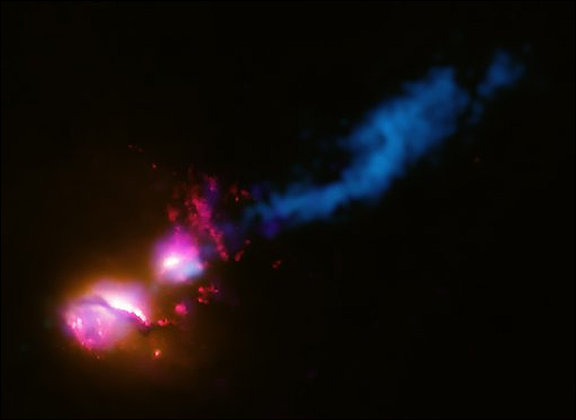
“…as if millions of voices suddenly cried out in terror and were suddenly silenced.” Scientists at NASA catch a glimpse of cosmic devastation on a galactic scale, as a “death star galaxy,” fueled by a black hole, destroys its neighbor with a beam of radiation. “The telescope images show the bully galaxy shooting a stream of deadly radiation particles into the lower section of the other galaxy, which is about one-tenth its size…Tens of millions of stars, including those with orbiting planets, are likely in the path of the deadly jet…If Earth were in the way — and it’s not — the high-energy particles and radiation of the jet would in a matter of months strip away the planet’s protective ozone layer and compress the protective magnetosphere.” And what does that mean? “‘You would basically render extinct all surface forms of life,’ Tyson said. ‘But it may be that subterranean life is…immune to this kind of violence in the universe.‘” You heard the man…start digging.
